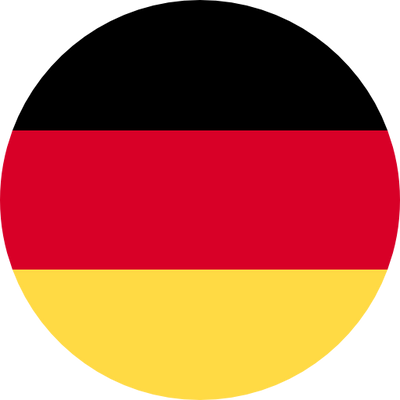Michael Kvium / raawii
“I want, without wishing it, to see the abyss, to see in the dark”
– Michael Kvium
Beauty deceives, betraying the beholder, according to the Danish artist Michael Kvium (b 1955), in order to conceal from the onlooker the trauma of civilization—attempting to edify the audience in the ideological and normalizing conceits of society—honor, moral rectitude, or the lie of authority—while also stripping the sight from their eyes. Artists, Kvium suggest, can be broadly divided into two groups, “those who reveal and those who conceal. And no matter what it costs, I would much rather be the first kind.” Adding elsewhere, “Behind each good work of art is a revolution.”
Through the classical beauty of his often grotesque and provocative figurative compositions, Kvium utilizes a baroque performative aesthetic to fix a keen gaze on that to which society often turns a blind eye. Emerging on to the international art scene in the 1980s, on the leading edge of postmodernity, Kvium rebelliously sought a return to the possibilities of figuration in art, after the progressively dematerializing tendencies of minimalism, abstract expressionism, and conceptualism during the preceding decades of the 20th century. Imbued with particularly northern European contours of existential longing, the artist’s oeuvre, which spans film, performance, installation, sculpture, and painting, makes use of an iconography of the abject, ugly, surreal, or deformed in order to reveal the absurd nature of existence and to point to the equally horrifying, concealed underside of power.
Kvium’s partnership with the Copenhagen-based design firm Raawii, known for drawing inspiration from art history, has proven a revelation to both parties. As founder Nicholai Wiig-Hansen states, “We approached Michael for our inaugural partnership with a living artist, as we saw him as someone who would understand our vision.” Kvium, travelling upon invitation to the firm’s factory in southern Europe, not only delighted in the opportunity to work with new materials, but was impressed by the dedication and convivial experience of the factory staff, whose congenial approach freed the artist to engage fully with the opportunity. As Nicholai notes, this partnership, the first of several Raawii hopes to forge with contemporary artists, does not seek to emulate the model of art world creations. Avoiding the temptation to treat the design pieces as works of art, Raawaii’s founder remains adamant, “These are products, not editioned pieces.” Each design piece is to be manufactured in Portugal in unlimited quantities , seeking to place an object for use, as well as a manifestation of the artist’s vision, into the hands of a larger audience. This Kvium / Raawii partnership has yielded three earthenware products to date, collectively titled Jam: a vase (23 x 18 cm), a centrepiece (8 x 34 x 40 cm), and a figurative candleholder (31 x 25 x 35 cm).

The absurd made flesh: Kvium vase and centrepiece
Consumed by the freedom of exploring a new medium, Kvium gavotte process free reins and the first two of his three designs for Raawii were initially intended only as experiments. However, this liberation resulted in not just one but two final works, a vase (available in seven colours) and a platter (available in three colours), both revealing an essential element of the artist’s iconographic unconscious. Cascading over the lips and within the hollows of the vase and serving plate, fleshy, bulbous, interconnected masses, first composed by Kvium in his notebooks as early as the 1980s, present to the spectator an essential idiom in the artist’s pantheon. Representing at turns the embryonic form, entrails, or moribund remains, within these lugubrious, wanton formless forms lie the traces of an intense ideological struggle which, for the artist, will determine nothing less than the very future of life on this earth. Indeed, in Kvium’s work, such formless masses have attained explicit political connotations. Appearing as a sculptural, interconnected alien, labyrinthine, immersive installation in the final room of the artist’s highly charged Circus Europa from 2017-18 at the Arken Museum of Modern Art, these homunculi or viscera present to the viewer the possible consequences for human life in the aftermath of continued, unmitigated ecological destruction.

Uncanny puppet to power: a candleholder
In the third and final design piece created by Kvium for his partnership with Raawii, the ambiguous physiognomy, formless flesh, and anthropomorphic abjection fall away. In their place, a diminutive and seemingly dejected—young child sits on a tabletop, a candle jutting violently from his bowed head. Produced in pure white plaster, with the exception of a single black T-shirt tag emerging askew from the nape of his neck, the uncanny presence belies the portrait of what the artist terms a juvenile “puppet”; like many of Kvium’s youthful figures, deprived of agency, this “puppet” is prey to the power and desires of others, especially the prerogatives and politics of a corrupt adult world. This centrepiece candleholder, a performative, absurd object playing its part in the theatricality of quotidian drama, reflects the dialectical tendencies of much of Kvium’s oeuvre: shifting between the poles of confrontation and reflection. Evoking an affective response from the onlooker, the composition recalls both previous sculptural works by the artist, such as The Culture Ride (2012), a bronze piece presenting a child with a paint palette on the back of a donkey with covered eyes, representing, to the artist, “a portrait of culture, riding blindly on its way” as well as previous paintings such as Simple Portrait IV (2011), featuring a nude male figure (also of Kvium’s countenance) with an illuminated candle dripping from the top of his head, humorously signifying the absurd proximity of enlightenment and madness.




